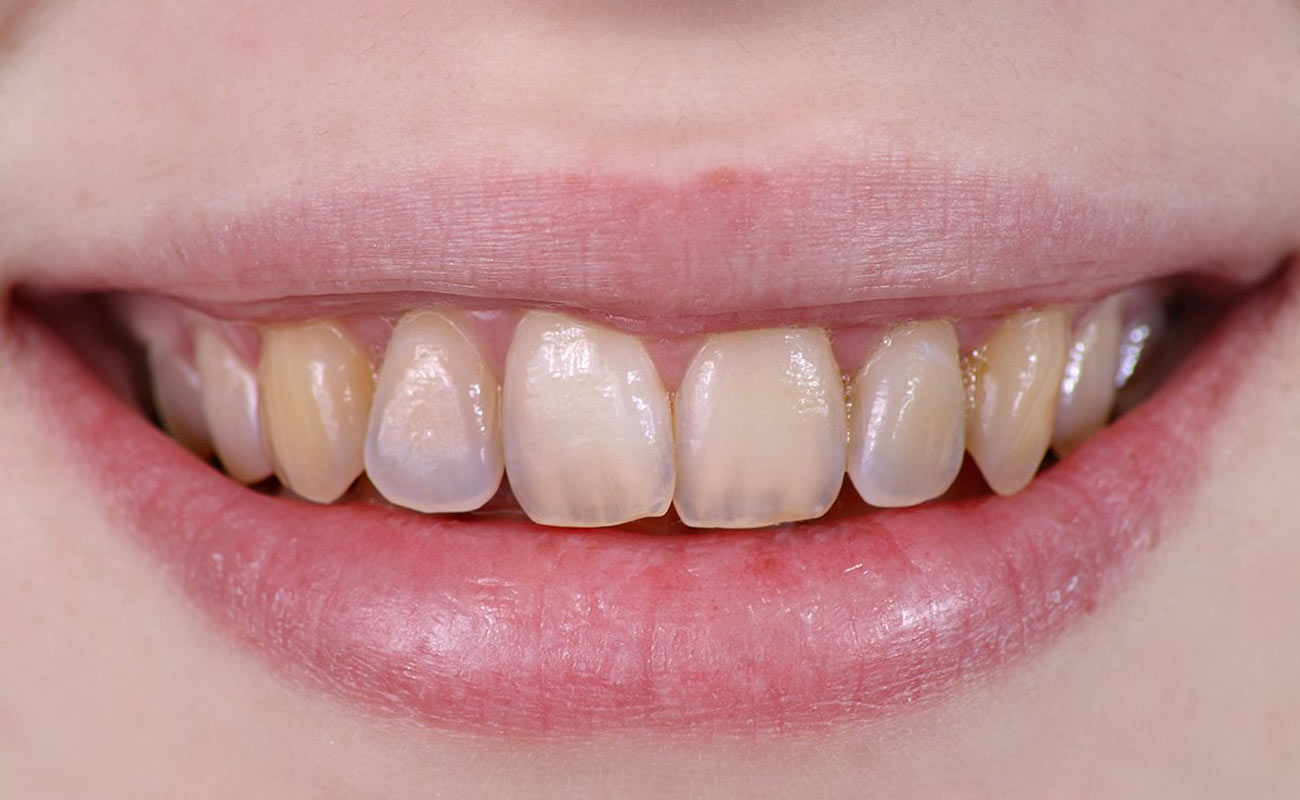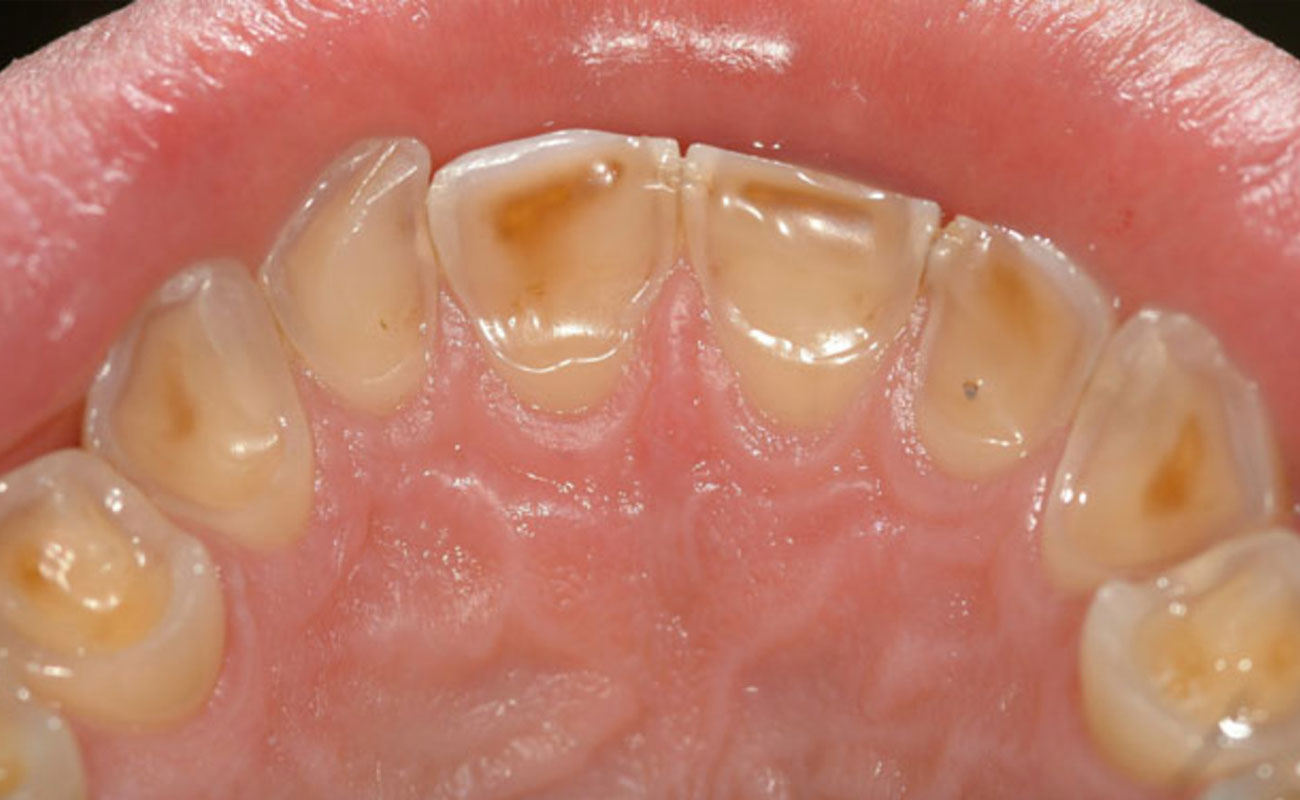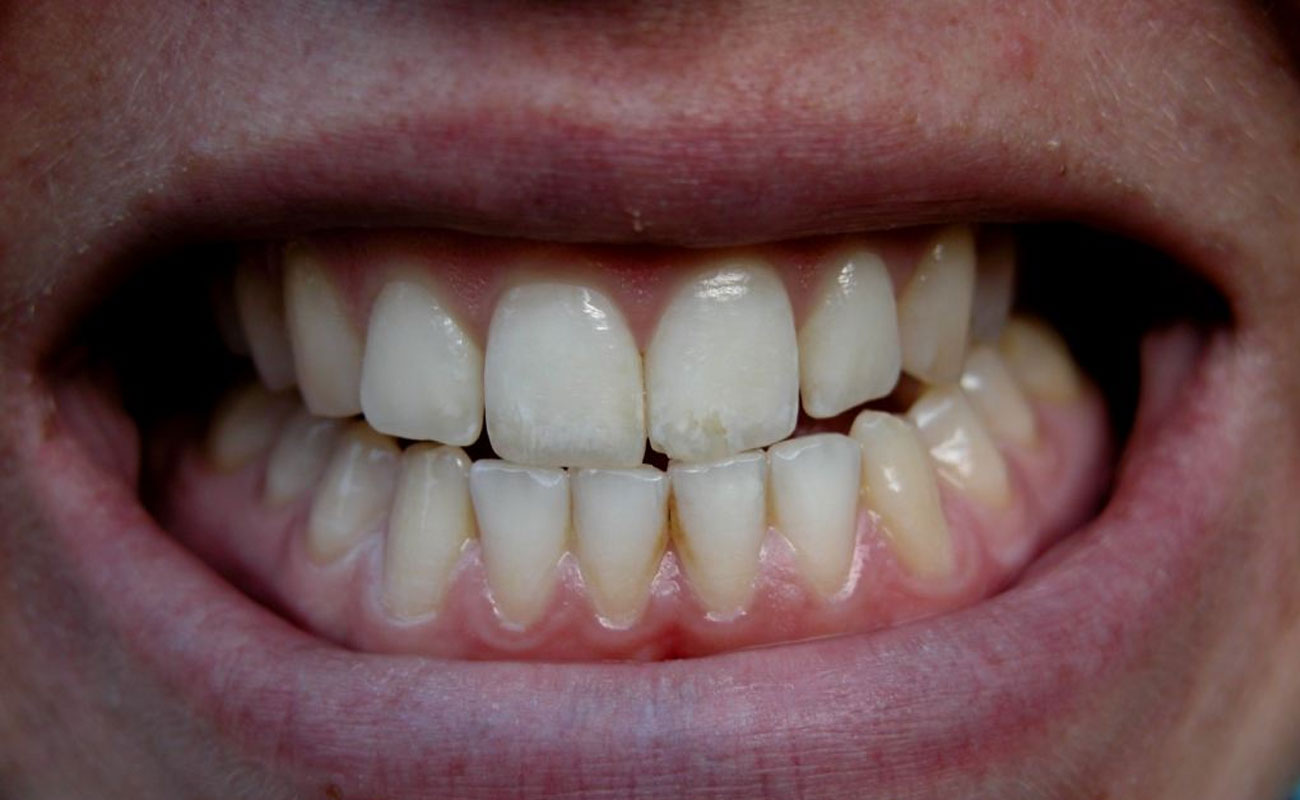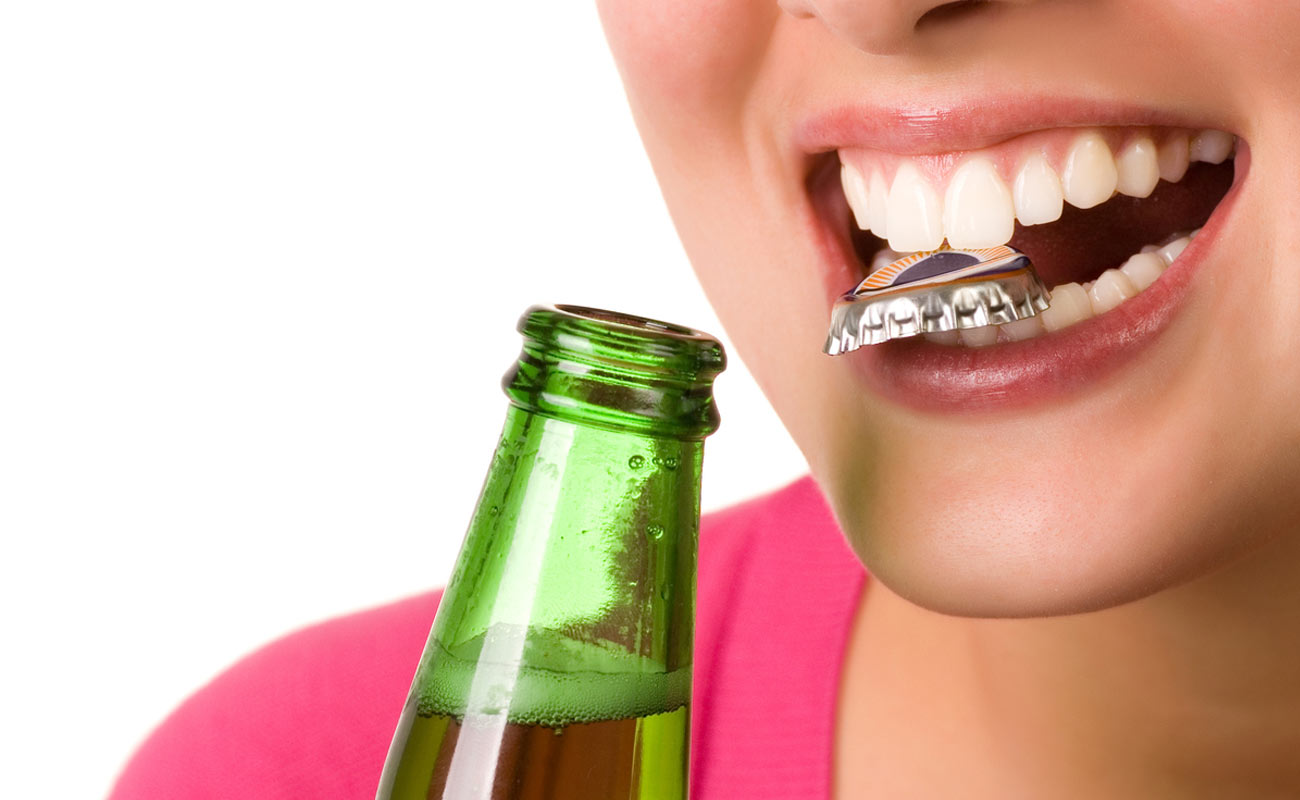All to know about Tooth WEAR & Erosion
Accelerated tooth wear, worn out or worn down teeth and acid dental erosion are increasingly common today. This is commonly termed as “Tooth Substance Loss” or “TSL”
There are 3 forms of accelerated tooth substance loss (TSL):
Attrition
This is tooth wear through grinding or clenching, i.e. tooth to tooth wear and affects the biting/chewing surfaces of the teeth.
Abrasion
This is tooth wear through over aggressive brushing and typically affects the sides and necks of the teeth.
Erosion
This is loss of tooth structure (enamel and dentine) dissolved through acid erosion caused by acidic foods and drinks in our diets, or in patients with conditions like bulimia or acid-reflux.

Of course we often see patients with more than one, or even a combination of all of the factors above too, for example the case shown on the right.
Causes of tooth erosion
- Excessive soft drink consumption (high level of phosphoric and citric acids)
- Fruit drinks (some acids in fruit drinks are more erosive than battery acid)
- Dry mouth or low salivary flow (Xerostomia)
- Diet (high in sugar and starches)
- Acid reflux disease (GORD)
- Gastrointestinal problems
- Medications (aspirin, antihistamines)
- Genetics (inherited conditions)
- Environmental factors (friction, wear and tear, stress, and corrosion)

Types of tooth erosion
Friction, wear and tear, stress, and corrosion (or any combination of these actions) can cause erosion of the tooth surface. More clinical terms used to describe these mechanisms include:
- This is natural tooth-to-tooth friction that happens when you clench or grind your teeth such as with bruxism, often occurring involuntary during sleep.
- This is physical wear and tear of the tooth surface that happens with brushing teeth too hard, improper flossing, biting on hard objects (such as fingernails, bottle caps, or pens), or chewing tobacco.
- This occurs from stress fractures in the tooth such as cracks from flexing or bending of the tooth.
- This occurs chemically when acidic content hits the tooth surface such as with certain medications like aspirin or vitamin C tablets, highly acidic foods, GORD, and frequent vomiting from bulimia or alcoholism.
Symptoms
When enamel on the teeth wears down, several things may occur:
- Teeth may become discoloured because the enamel has worn away and the dentin is exposed.
- The edges of the front teeth may look transparent.
- Tooth sensitivity may occur both on inner and outer surfaces of the teeth. This is due to the dentin layer, normally covered by the enamel, becoming exposed to the oral environment. If you notice these types of changes in your teeth, please consult your dentist.

Complications of dental erosion
Dental erosion, if untreated, can lead to the progressive loss of the surface of the tooth. The loss of tooth structure can require complex and lengthy treatment involving fillings, veneers, crowns and potentially root canal treatment.
When the signs of dental erosion are detected, it is very important to determine the cause and modify it.
Prevention of dental erosion
Dental erosion can be prevented by limiting contact of acids with the teeth. Some tips include:
- Eat a healthy, well-balanced diet.
- Drink fluoridated water rather than soft drink or juice.
- Eat fruit rather than drinking fruit juice.
- Reduce how often you eat or drink anything acidic.
- Use a straw if you are drinking something acidic.
- Seek medical treatment for management of reflux or vomiting.
- Do not chew vitamin C tablets. If necessary, take vitamin C supplements that are swallowed whole.
- Use sugar-free chewing gum after meals to promote saliva flow. Saliva is very important for protecting your teeth from erosion.
- Consider using dental products containing ‘stannous fluoride’ [Tin (II) fluoride]. Recent studies suggest stannous fluoride is effective in reducing tooth erosion.
Following exposure to strong acids, you can help to neutralise the acid by:
- Rinsing with water or a fluoride mouth rinse
- Rinsing your mouth with a sodium bicarbonate (baking soda) mouth rinse (one teaspoon of sodium bicarbonate in a glass of water)
- Consuming dairy products.
Tips to minimize tooth wear include:
- Use a soft-bristled tooth brush with fluoridated toothpaste.
- Avoid using abrasive toothpastes (some whitening toothpastes are more abrasive).
- Do not brush your teeth immediately after consuming something acidic.
- Wear a custom made dental splint if you grind your teeth at night.
Treating Tooth Erosion

When it comes to treating tooth erosion, the old standbys for treating tooth decay apply. Dental restorations are necessary to rebuild tooth structure. By having dental fillings, inlays, onlays, or dental crowns placed, you can have your overall dental health and bite strength improved.
When tooth erosion is very serious, it may be necessary to extract a damaged tooth. This is only done as a last case scenario as it is always preferable to save a tooth when possible. The ideal restoration method for you will be discussed during the consultation process.
Sources
Smilesbymyles, betterhealth.vic.gov.au, colgate.ca, webmd, gpdentalpartners.com.au, advanceddentistry.co.uk,




Submit Comment